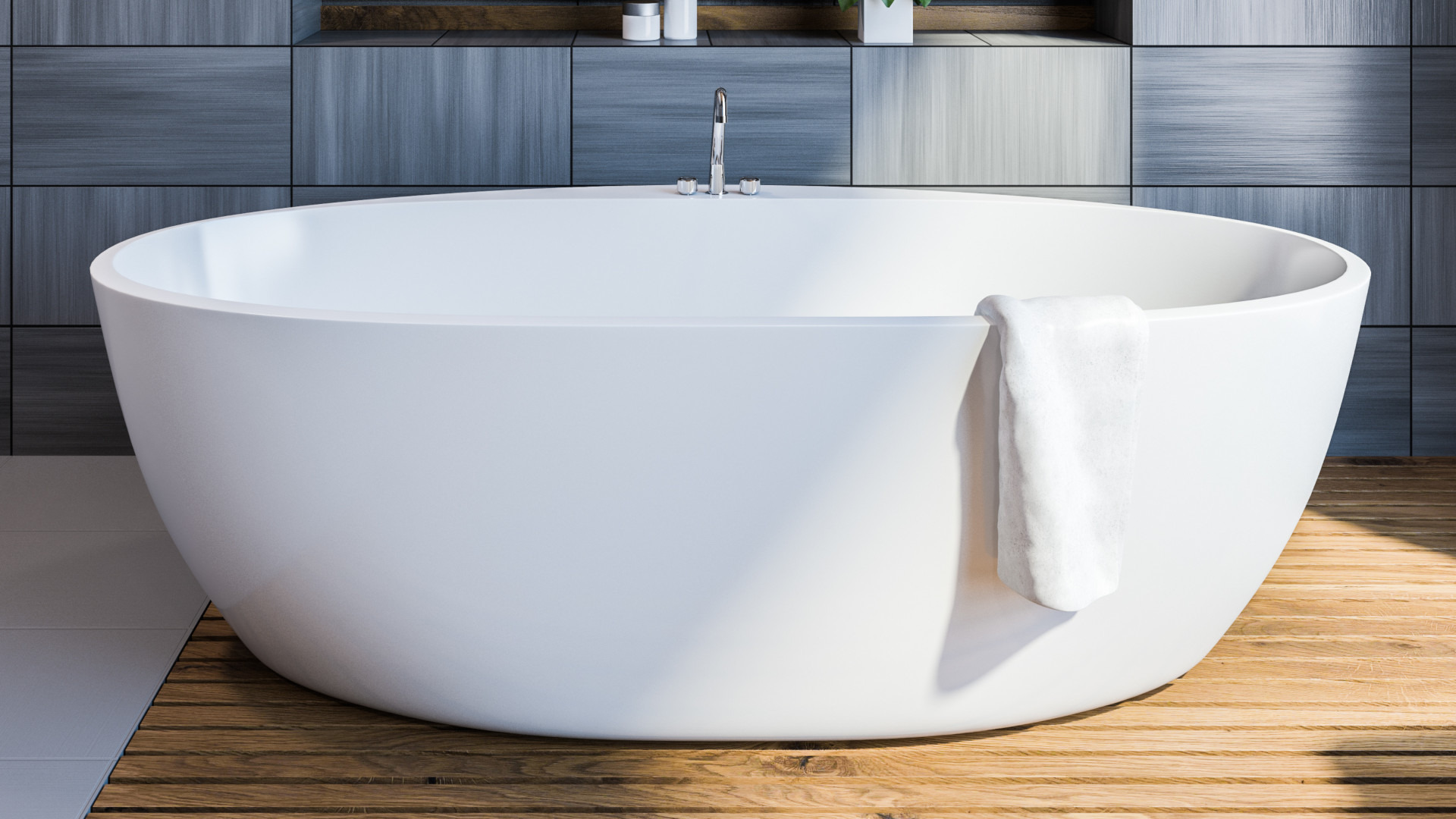
We have a lot of types of bathtubs to choose from. If we have already decided on a round or oval one, now it's time to choose the material it will be made from. This is important due to the maintenance of the surface and the price. Manufacturers compete in variety, giving us plenty of choices when it comes to bathtubs.
Acrylic, Steel, Marble
An acrylic bathtub is one of the most popular types. They are characterized by great variety, making it easier to find a model with an unusual shape. To increase their resistance to damage, they are sometimes coated with polyester resin. Their advantages include lightness, a large choice, resistance to discolouration, and the possibility of installing a hydro massage. Bathtubs made of artificial marble are also popular, ideal for those who appreciate luxury and richness in interiors. The advantages of such bathtubs are solidity, resistance to damage, and warm walls even before being filled with water.
A popular group includes oval and round steel bathtubs. They are covered with enamel, which gives them additional resistance to mechanical damage. Their advantages are the variety of shapes and colours, affordability, resistance to strong detergents, and compared to other models, they are quite light. Cast iron bathtubs, on the other hand, are often characterized by embellishments such as legs in the form of antique sculptures. In stores, you can most often find white bathtubs in a rectangular shape.
Different Types of Installation
However, nothing prevents a regular bathtub from being turned into a shower bath. You just need to purchase a suitable screen, which will allow for a quick bath without splashing water around. They can be installed naturally, in a standard way, i.e., against a wall. We also distinguish bathtubs with hydromassage. This is a bathtub that can serve as a home spa centre. We can distinguish water massage, air massage, and water-air massage bathtubs.
A back-to-wall bathtub is mounted along one or at most two walls. Corner bathtubs are installed in corners. Freestanding ones are ideal for large bathrooms, where they are most often installed in the middle of the room. However, the location really depends on the designer's vision and the preferences of the household. If there is an old, damaged bathtub in the house, tiled around, and there's no possibility of renovating in the near future, you can use the solution called tub in tub. This means installing a new acrylic bathtub (a special insert) in the old one.


















